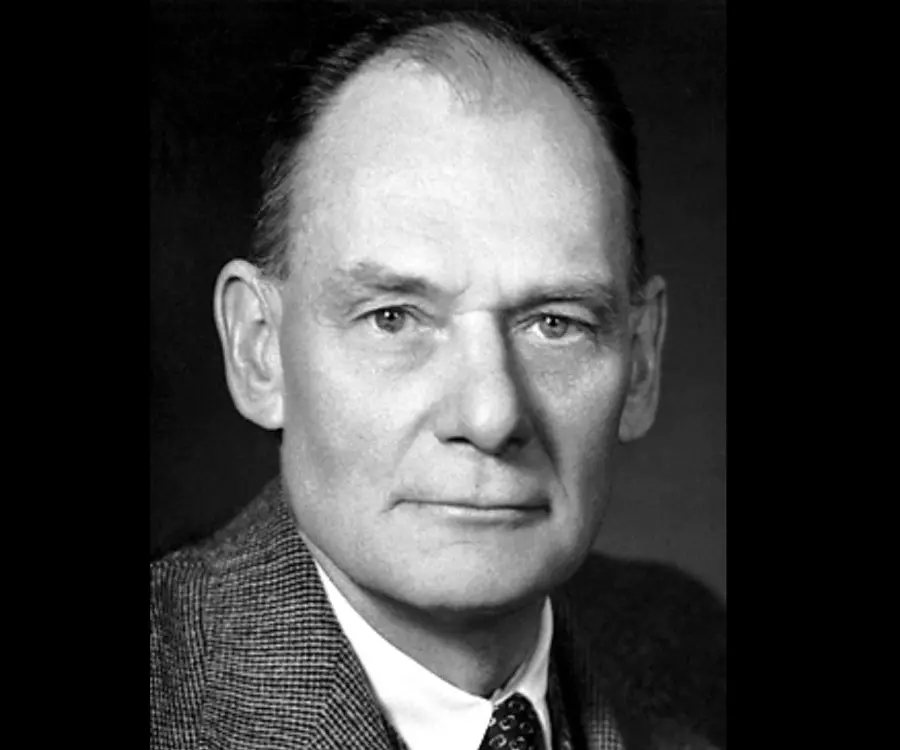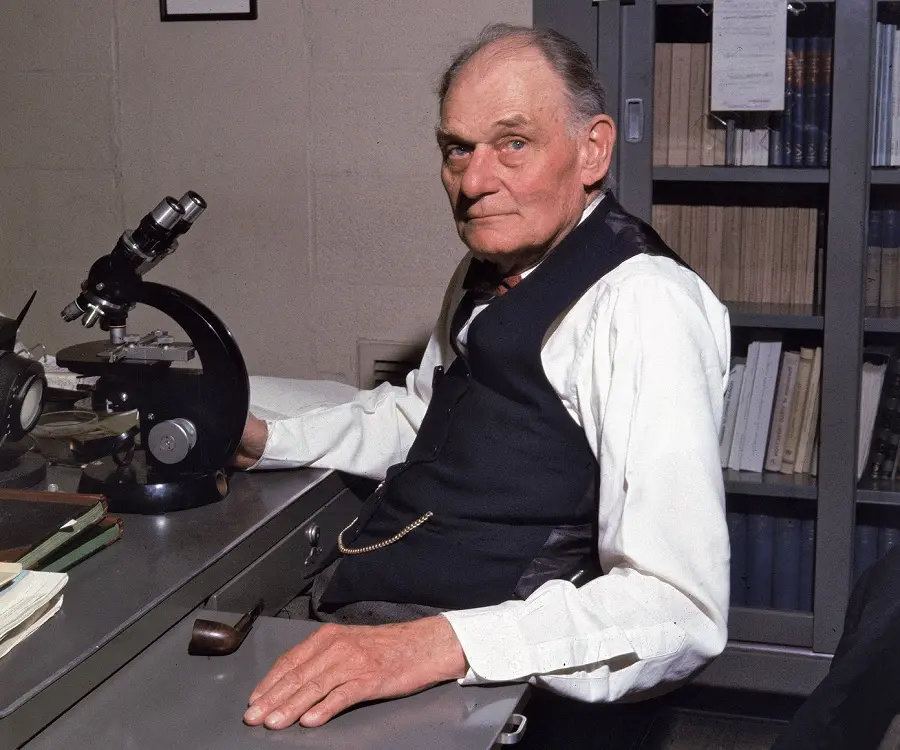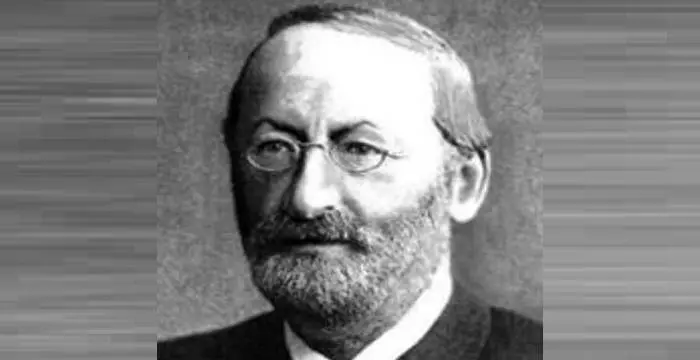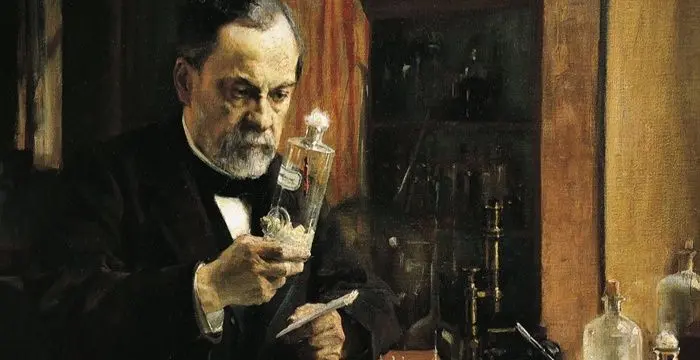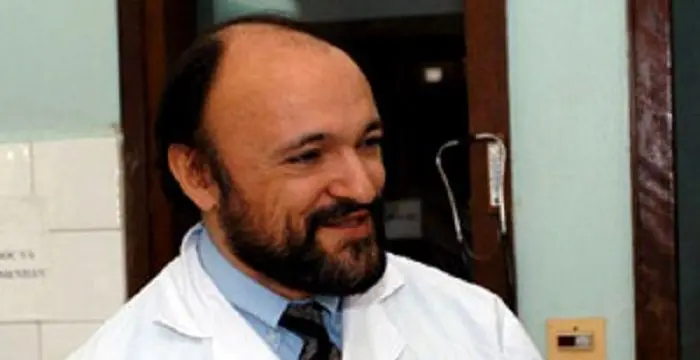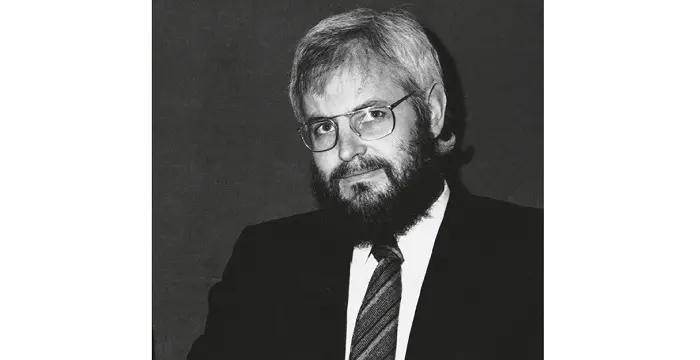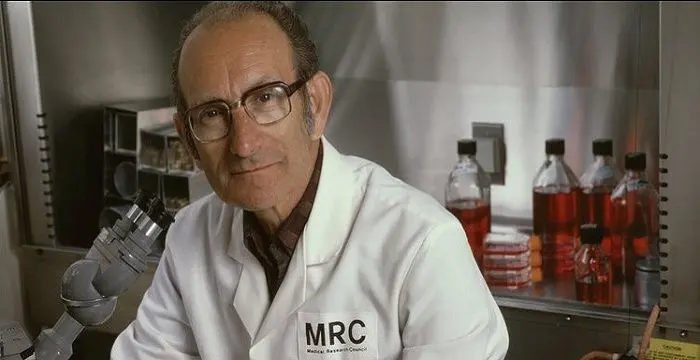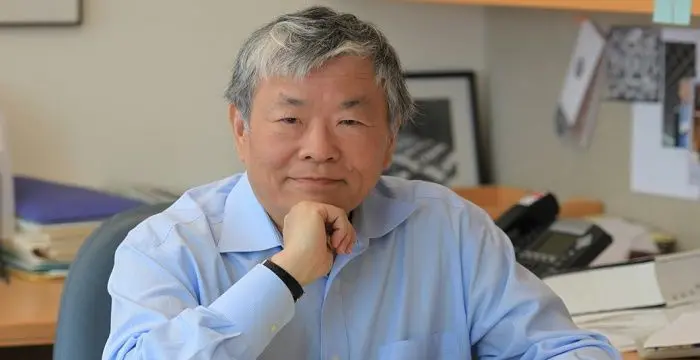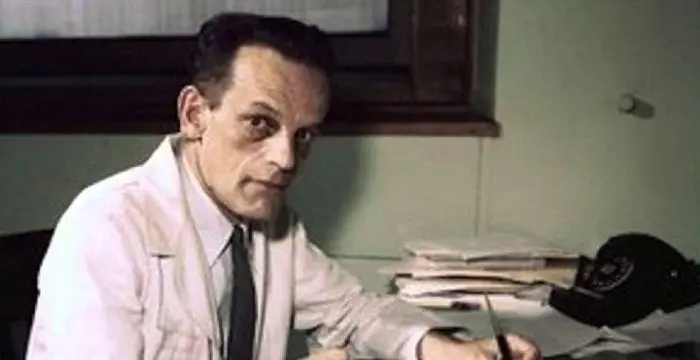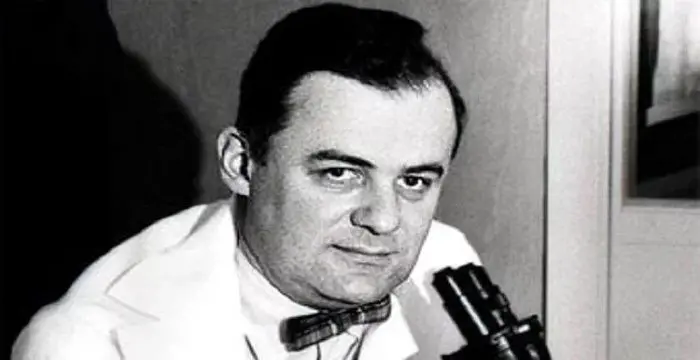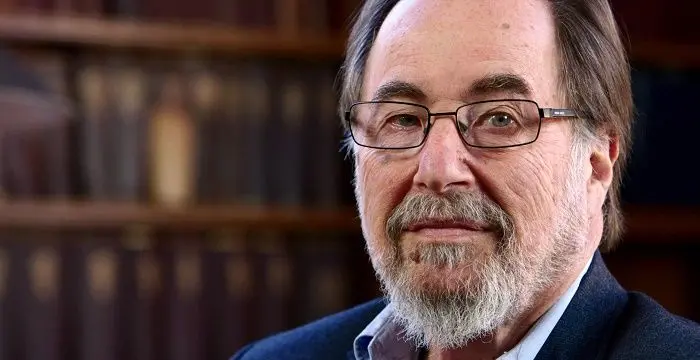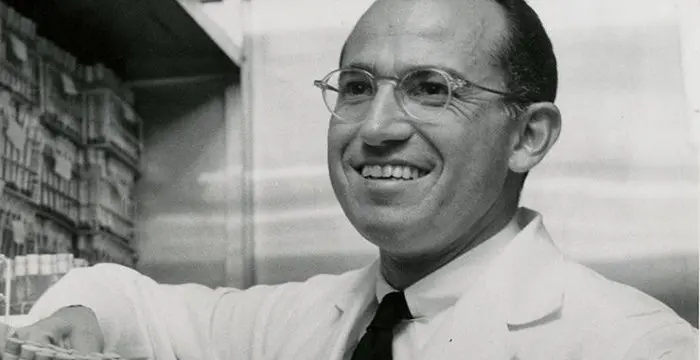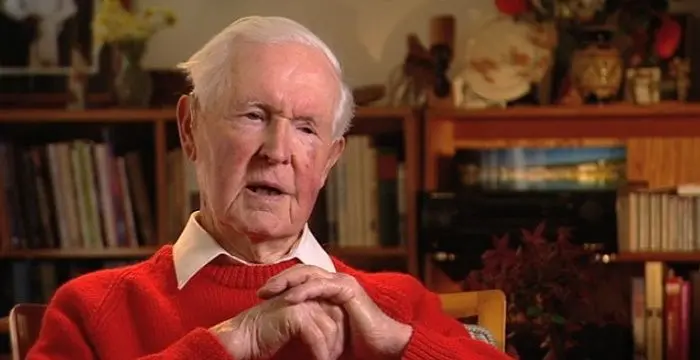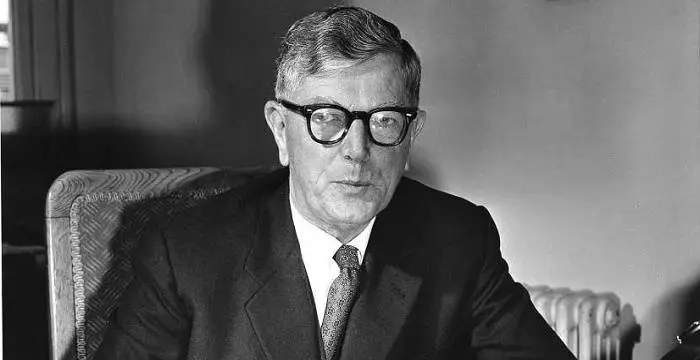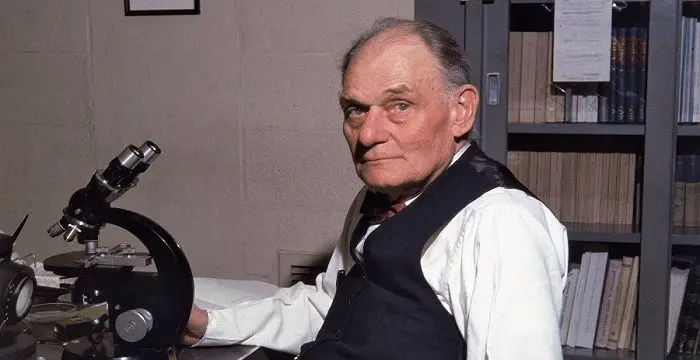
John Franklin Enders - the Father of Modern Vaccines, Timeline and Childhood
John Franklin Enders's Personal Details
John Franklin Enders, a Nobel laureate, is popularly referred to as the Father of modern vaccines
| Information | Detail |
|---|---|
| Birthday | February 10, 1897 |
| Died on | September 8, 1985 |
| Nationality | American |
| Famous | Scientists, Immunologists, Microbiologists, Virologists, the Father of Modern Vaccines |
| City/State | Connecticut |
| Birth Place | West Hartford, Connecticut |
| Gender | Male |
| Sun Sign | Aquarius |
| Born in | West Hartford, Connecticut |
| Famous as | The Father of Modern Vaccines |
| Died at Age | 88 |
John Franklin Enders's photo
Who is John Franklin Enders?
The Father of modern vaccines, John Franklin Enders was an America virologist and microbiologist who casted an important influence on the field of science through his revolutionary research and discoveries. A leader in modern virology, Enders is credited for cultivating the polio-virus in tissue cultures of human cells which led to the development of an attenuated live vaccine for polio. However, this isn’t all that Enders achieved in his career. Enders isolated the measles virus and in turn developed the measles vaccine that successfully put an end to the disease. Interestingly, upon reading the achievements, one tends to believe that Enders tryst with science started early. However, it is quite amazing to find out that Enders did not opt for science until quite late in his life. He was in fact enrolled for a literature course at Harvard when he befriended some medical students who rekindled Enders’ interest in biology and medicine. He then decided to enter as a candidate for the Ph.D. degree in bacteriology and immunology. Upon receiving his doctorate degree, Enders started his research program. In 1953, he jointly received the Nobel Prize in Physiology or Medicine for culturing the poliovirus. Later in his career, he isolated measles virus and developed measles vaccine as well.
// Famous Microbiologists
Ferdinand Cohn
Ferdinand Cohn was a German biologist who is considered as the father of bacteriology and microbiology. Check out this biography to know about his childhood, life, achievements, works & timeline.
Louis Pasteur
Louis Pasteur was a French chemist and microbiologist who developed the first vaccines for rabies and anthrax. This biography of Louis Pasteur provides detailed information about his childhood, life, achievements, works & timeline.
Carlo Urbani
Italian epidemiologist Carlo Urbani was the first person who identified SARS as a highly contagious disease. Find out more about his life in this biography.
Childhood & Early Life
John Franklin Enders was born in an affluent family, on February 10, 1897, in West Hartford, Connecticut, to John Ostrom Enders and Harriet Goulden Enders. His father was the CEO of the Hartford National Bank and left Enders $19 million upon his death.
Young Enders was educated at the Noah Webster School in Hartford. He later attended St Paul’s School in Concord, New Hampshire.
Enders enrolled at the Yale University for his graduation. However, he left the same during World War I to join the United States Army Air Corps as a flight instructor and lieutenant.
After completing his services at World War I, Enders returned to Yale to complete his graduation degree. At Yale, he became a member of Scroll and Key as well as Delta Kappa Epsilon.
Upon gaining his graduation degree, Enders tried his hand at several fields. He entered real estate business but it did not interest him much. He then enrolled at Harvard university to study English literature, Germanic and Celtic language so as to become a teacher but left it half-way.
It was while at Harvard that Enders befriended medical students. The friendship rekindled Ender’s long lost interest in biology. As such, he enrolled for a PhD degree in bacteriology and immunology at the Harvard University. In 1930, Enders was awarded the doctorate degree for his thesis that presented evidence that bacterial anaphylaxis and hypersensitivity of the tuberculin type are distinct phenomena.
Career
Following his doctorate degree, John Franklin Enders embarked on a career in bacteriology. He joined his alma mater Harvard University as a faculty member. He was appointed as an assistant in the department of bacteriology and immunology.
During his early years at Harvard, Enders studied the elucidation of certain factors related to bacterial virulence and the resistance of the host organism. Together with Ward, Shaffer and Wu, he explained the inhibitory effect of the type specific capsular polysaccharides of Pneumococcus upon the phagocytic process. This work discovered a new form of Type I polysaccharide and produced evidence that complemented a catalytic-like part in the opsonization of bacteria by specific antibody.
In 1935, Enders was promoted to the position of assistant professor at Harvard University. Three years later, he undertook the study of some of the mammalian viruses. In 1941, he studied the virus of the mumps.
Enders’ first major breakthrough was the development of techniques for detection of antibodies to mumps virus. With the help of fellow researchers, he showed that virus could be grown in chick embryos and tissue culture. It was on the basis of the work that diagnosis of the disease and a skin test for its determination was developed. The work showed that mumps often occurred in a form that is unapparent, but conferred a resistance which was as effective as that conferred by the visible disease. The result of the studies provided the basis for the development of preventive measures against the disease. Today, even an attenuated live-virus vaccine is available for the disease.
In 1941, Enders was promoted to the rank of Associate Professor in Harvard University. During World War II, he served as a civilian consultant on epidemic diseases to the Secretary of War.
During War (in 1946), Enders was asked to establish a laboratory for research on infectious disease, at the Children’s Medical Center in Boston. It was at this laboratory that much of the research work on viral diseases was done under his administration.
Post War, Enders collaborated with his colleagues, Dr Frederick Robbins and Dr Thomas Weller to study the nature of mumps and chicken-pox virus. Various human cells in culture were used in research. Upon Ender’s suggestion, some of the cultures were inoculated with polio virus. Interestingly, the poliovirus did propagate in one type of culture made up of cells which were not from the nervous system. This discovery, and the studies which it made possible, opened the gateway for a new epoch in poliovirus research. The outcome of the research was the possibility for development of poliovirus vaccine.
Using the technique provided by Enders, Robbins and Weller, Dr Jonas Salk produced the first polio vaccine in 1953. The success of the first polio vaccine led to it being produced in large quantities.
In 1954, the trio (Enders, Robbins and Weller) shared the most prestigious award, Nobel Prize in Physiology or Medicine, for their outstanding success in discovering the ability of polioviruses to grow in cultures of various types of tissue.
Immediately after the successful production of polio vaccine, he started research on measles. In 1954, he successfully isolated measles virus from an 11 year old boy, David Edmonton. Researching on the same, he was successful in growing the virus in tissue culture. He followed this with a series of investigations that resulted in a measles vaccine in 1962.
During the later years of his life, Enders turned his attention to cancer-related viruses. Much like earlier challenges, Enders made important contributions to this field as well, particularly to studies of fusion of cells from different species as a means of altering cell susceptibility to viruses.
Major Works
Enders’ contribution in the field of virology and immunology has been immense. He is credited with cultivating the poliomyelitis virus in non-nervous tissue cultures, which served as a preliminary step to the development of the polio vaccine in 1953 by Dr Jonas Salk. Other important contribution made by him was isolating measles virus and in turn developing the measles vaccine.
Awards & Achievements
In 1954, Enders, along with his fellow researchers Robbins and Weller, received the prestigious Nobel Prize in Physiology or Medicine for his discovery of the ability of the polio viruses to grow in culture of various types of tissues.
In 1955, Enders received the Kyle Award from US Public Health Service.
Enders was felicitated with the Presidential Medal of Freedom and Science Achievements Award from the American Medical Association in 1963.
In 1967, he became a foreign member of the Royal Society of London.
Personal Life & Legacy
John Franklin Enders tied the nuptial knot with Sarah Frances Bennett in 1927. The couple was blessed with two children, John Ostrom Enders II and Sarah Enders.
After the death of his wife in 1943, Enders married Carolyn B. Keane of Newton Center, Massachusetts. From her, he had a son William Edmund Keane.
Enders breathed his last on September 8, 1985, in Waterford, Connecticut, at the age of 88.
// Famous Immunologists
Georges J. F. Kohler
Georges J. F. Kohler was a German immunologist who received the Nobel Prize in Physiology or Medicine in 1984. Check this biography to get details about his life, profile and timeline.
Cesar Milstein
Cesar Milstein was an Argentinian biochemist who received the Nobel Prize for his discovery of monoclonal antibody. Explore this biography to get details about his life, career and scientific discoveries.
Susumu Tonegawa
Susumu Tonegawa is a Japanese molecular biologist who was awarded the Nobel Prize for Physiology or Medicine in 1987. This biography of Susumu Tonegawa provides detailed information about his childhood, life, achievements, works & timeline.
John Franklin Enders's awards
| Year | Name | Award |
|---|---|---|
Other | ||
| 0 | 1954 - Nobel Prize in Physiology or Medicine | |
| 0 | 1954 - Albert Lasker Award for Basic Medical Research | |
John Franklin Enders biography timelines
- // 10th Feb 1897John Franklin Enders was born in an affluent family, on February 10, 1897, in West Hartford, Connecticut, to John Ostrom Enders and Harriet Goulden Enders. His father was the CEO of the Hartford National Bank and left Enders $19 million upon his death.
- // 1927John Franklin Enders tied the nuptial knot with Sarah Frances Bennett in 1927. The couple was blessed with two children, John Ostrom Enders II and Sarah Enders.
- // 1930It was while at Harvard that Enders befriended medical students. The friendship rekindled Ender’s long lost interest in biology. As such, he enrolled for a PhD degree in bacteriology and immunology at the Harvard University. In 1930, Enders was awarded the doctorate degree for his thesis that presented evidence that bacterial anaphylaxis and hypersensitivity of the tuberculin type are distinct phenomena.
- // 1935 To 1941In 1935, Enders was promoted to the position of assistant professor at Harvard University. Three years later, he undertook the study of some of the mammalian viruses. In 1941, he studied the virus of the mumps.
- // 1941In 1941, Enders was promoted to the rank of Associate Professor in Harvard University. During World War II, he served as a civilian consultant on epidemic diseases to the Secretary of War.
- // 1943After the death of his wife in 1943, Enders married Carolyn B. Keane of Newton Center, Massachusetts. From her, he had a son William Edmund Keane.
- // 1946During War (in 1946), Enders was asked to establish a laboratory for research on infectious disease, at the Children’s Medical Center in Boston. It was at this laboratory that much of the research work on viral diseases was done under his administration.
- // 1953Using the technique provided by Enders, Robbins and Weller, Dr Jonas Salk produced the first polio vaccine in 1953. The success of the first polio vaccine led to it being produced in large quantities.
- // 1953Enders’ contribution in the field of virology and immunology has been immense. He is credited with cultivating the poliomyelitis virus in non-nervous tissue cultures, which served as a preliminary step to the development of the polio vaccine in 1953 by Dr Jonas Salk. Other important contribution made by him was isolating measles virus and in turn developing the measles vaccine.
- // 1954In 1954, the trio (Enders, Robbins and Weller) shared the most prestigious award, Nobel Prize in Physiology or Medicine, for their outstanding success in discovering the ability of polioviruses to grow in cultures of various types of tissue.
- // 1954 To 1962Immediately after the successful production of polio vaccine, he started research on measles. In 1954, he successfully isolated measles virus from an 11 year old boy, David Edmonton. Researching on the same, he was successful in growing the virus in tissue culture. He followed this with a series of investigations that resulted in a measles vaccine in 1962.
- // 1954In 1954, Enders, along with his fellow researchers Robbins and Weller, received the prestigious Nobel Prize in Physiology or Medicine for his discovery of the ability of the polio viruses to grow in culture of various types of tissues.
- // 1955In 1955, Enders received the Kyle Award from US Public Health Service.
- // 1963Enders was felicitated with the Presidential Medal of Freedom and Science Achievements Award from the American Medical Association in 1963.
- // 1967In 1967, he became a foreign member of the Royal Society of London.
- // 8th Sep 1985Enders breathed his last on September 8, 1985, in Waterford, Connecticut, at the age of 88.
// Famous Virologists
Max Theiler
Max Theiler was a South African-American virologist who developed a vaccine against yellow fever. This biography of Max Theiler provides detailed information about his childhood, life, achievements, works & timeline.
Frederick Chapman Robbins
Frederick Chapman Robbins was an American paediatrician and virologist who was one of the joint winners of the 1954 Nobel Prize in Physiology 1954. Check out this biography to know about his childhood, life, achievements, works & timeline.
David Baltimore
David Baltimore is an American biologist who won a share of the 1975 Nobel Prize in Physiology or Medicine. This biography of David Baltimore provides detailed information about his childhood, life, achievements, works & timeline.
Jonas Salk
Jonas Salk was a famous American virologist and medical researcher who discovered the polio vaccine. To know more about his childhood, career, profile and timeline read on.
Frank Fenner
Frank Fenner was an Australian scientist who made remarkable contribution in the field of virology. With this biography, explore in details about his life, profile, childhood and timeline.
Frank Macfarlane Burnet
Sir Frank Macfarlane Burnet was an Australian virologist and immunologist, known for his contributions in human biology. This biography profiles childhood, life, career, achievements and timeline of this Nobel Laureate.
John Franklin Enders's FAQ
What is John Franklin Enders birthday?
John Franklin Enders was born at 1897-02-10
When was John Franklin Enders died?
John Franklin Enders was died at 1985-09-08
Which age was John Franklin Enders died?
John Franklin Enders was died at age 88
Where is John Franklin Enders's birth place?
John Franklin Enders was born in West Hartford, Connecticut
What is John Franklin Enders nationalities?
John Franklin Enders's nationalities is American
What is John Franklin Enders's sun sign?
John Franklin Enders is Aquarius
How famous is John Franklin Enders?
John Franklin Enders is famouse as The Father of Modern Vaccines
